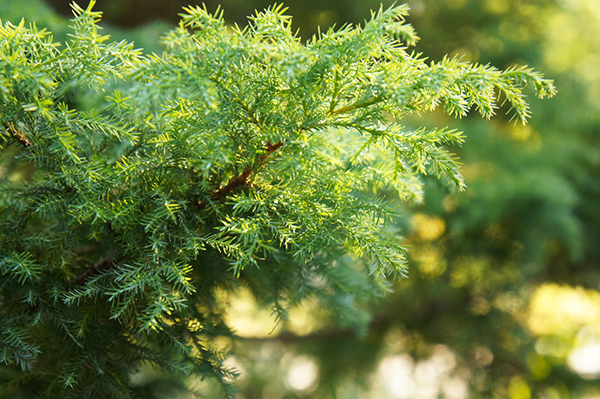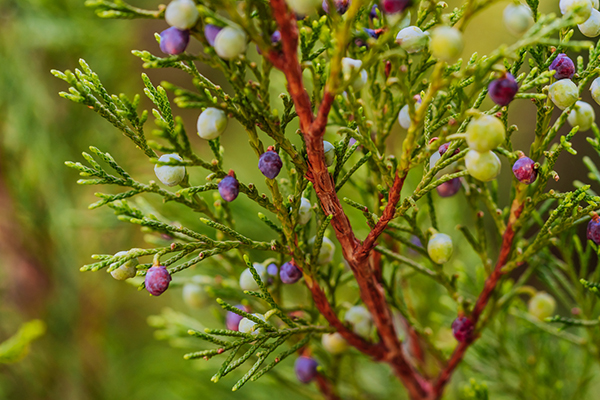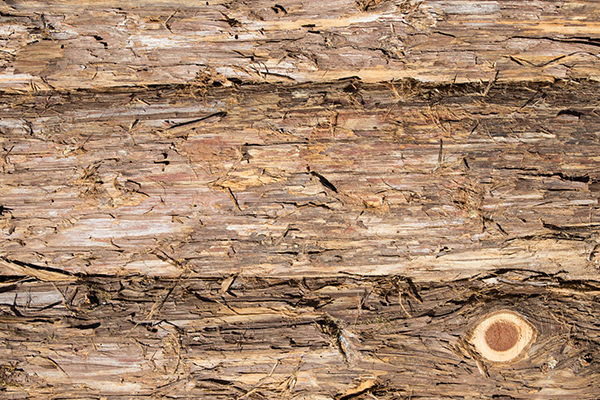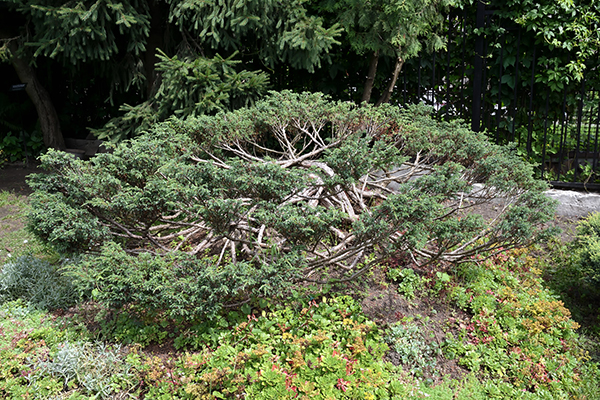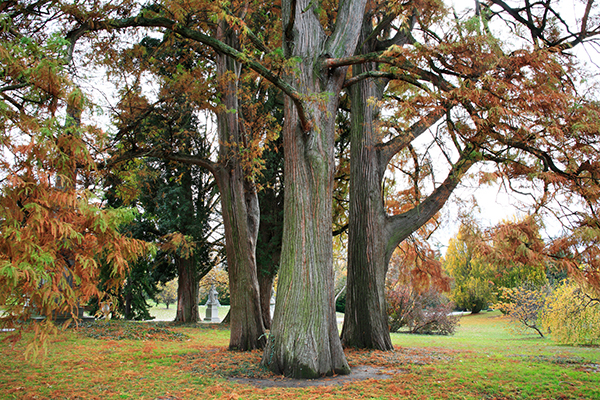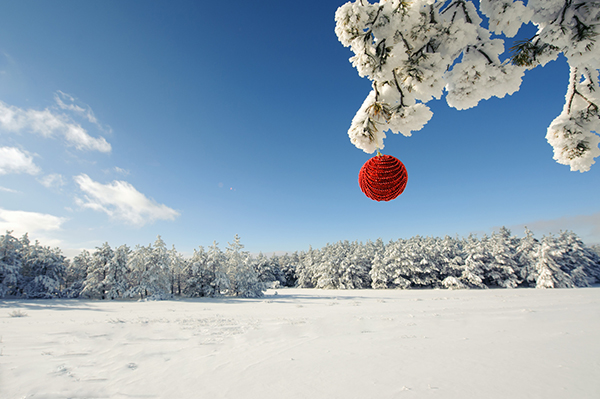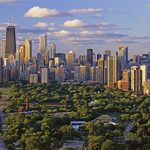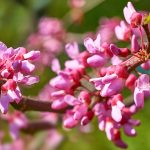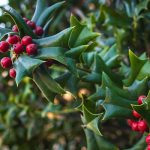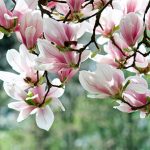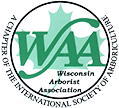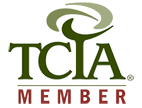We are back this week with our series on the native trees of the Chicago area with our first close look at an evergreen tree, the eastern red cedar (Juniperus virginiana). The eastern red cedar, also known as the red cedar, Virginian juniper, eastern juniper, red juniper, and pencil cedar, is a coniferous tree found throughout the eastern half of the United States. These trees can grow to be more than 40 feet tall and they may also appear as shrubs as small as 3-5 feet in height. The most distinctive characteristics of the eastern red cedar are its prickly / scale-like foliage that is blueish green in color and the blue berry-like fruits and golden-brown cones they produce.
There are somewhere between 50 and 67 known species of juniper trees found throughout the world in the Northern Hemisphere, with around 26 species native to North America, including the eastern red cedar. For our purposes, we will mostly focus on the eastern red cedar because it is one of the only juniper trees that is native to Illinois and the Chicago area. The next closest native juniper to Illinois is the creeping juniper (Juniperus horizontalis) which is mostly found throughout Canada but can appear as far south as northern Illinois. We will briefly discuss the creeping juniper and other species of juniper trees native to the U.S. in a later section.
In this review, we will discuss the characteristics of the eastern red cedar and other junipers native to the U.S., their biggest threats from insects and disease, and proper care tips. If you have an eastern red cedar tree on your property, providing it with proper care will help it stay strong and green all year long. Our ISA certified arborists at Hendricksen Tree Care can provide excellent residential and commercial tree care services to help keep your eastern red cedars healthy and vibrant. Our complete tree care services include fertilization and general maintenance as well as diagnosis and treatment for insect infestations and diseases.
Characteristics of Eastern Red Cedars
The eastern red cedar is a coniferous evergreen tree that grows slowly and has dense foliage. Its pressed, scale-like foliage, reddish bark, and purplish-blue berry-like fruits are what distinguish it from other evergreens. These trees are considered a pioneer species because they are one of the first tree species to appear in areas that have been cleared out or damaged. Eastern red cedars can live for over 900 years and they can grow just about anywhere from prairies to street sides because of their high tolerance to salt and acidic soils.
The following are the main characteristics of eastern red cedar trees:
- Height: Eastern red cedars can grow over 60 feet tall, but if they start growing in poor soil, they will likely stay the size of a shrub. As a tree, eastern red cedars may be between 15 and 65 feet tall and as a shrub, they are usually between 3 and 8 feet tall. The canopy of eastern red cedars tends to by pyramidal shaped.
- Leaves: Eastern red cedars have two different types of leaves. Younger trees have needles as leaves for the first three years before they develop their adult leaves which are pressed, scale-like leaves. The leaves keep their green color throughout the year but may turn a slight bronze color in the winter.
- Fruit: Eastern red cedars are dioecious with male and female fruits typically appearing on separate trees. The female trees produce berry-like fruits that are purplish-blue in color and contain several seeds. The male trees produce pollen cones that look like slender golden-brown pine cones. These pollen cones grow in clusters and are only about 3 mm long.
- Bark: The eastern red cedar gets its name from its reddish-brown bark. The bark is very fibrous with narrow ridges that peel off rather easily. The heartwood of the eastern red cedar is also reddish in color and is used for building because of its color and fine wood grain.
Species of Juniper Trees
As mentioned earlier, the eastern red cedar is the only juniper tree that is common in the Chicago area. However, there are several other species of juniper trees found in other areas of the U.S. The following are some of the New World species of juniper trees found in various regions throughout the U.S.:
-
- Creeping Juniper: The creeping juniper (Juniperus horizontalis) is a shrub that is found throughout Canada as well as certain areas of the northern U.S. including Montana, Minnesota, Wisconsin, Maine, Wyoming and the Dakotas. These trees can appear as far south as northern Illinois. The look a lot like eastern red cedars, but they grow horizontally as a shrub, rarely growing to be more than a few feet tall.
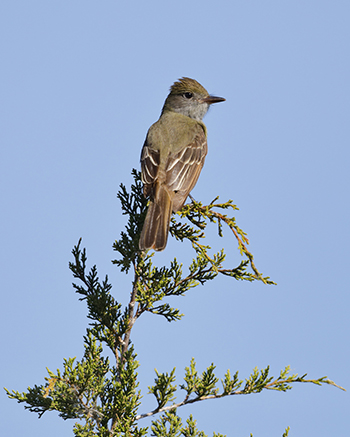
Juniper trees make a great year-round lookout and nesting solution for wildlife since they do not lose their leaves in the winter
- Rocky Mountain Juniper: The Rocky Mountain juniper (Juniperus scopulorum) is found throughout the Rocky Mountain region from New Mexico and Arizona up to Montana, Idaho, and southwest Canada. These trees are closely related to eastern red cedars and are similar in appearance, but they don’t grow quite as tall. Rocky Mountain junipers have been known to live for well over 1,000 years.
- Ashe Juniper: The Ashe juniper (Juniperus ashei) is another juniper that is closely related to the eastern red cedar. These trees are mostly found in Texas but also appear in Oklahoma, Arkansas, Missouri, and northern Mexico. The canopy of the Ashe cedar is more expansive than the eastern red cedar, and it rarely grows beyond 30 feet in height.
- California Juniper: The California juniper (Juniperus californica) is found mostly throughout California and Baja California, as well as areas in western Arizona and southern Nevada. These junipers usually grow to be small trees or shrubs with ashy gray colored bark and thick shoots.
- Utah Juniper: The Utah juniper (Juniperus osteosperma) is a small tree or shrub juniper that is found mostly in Utah, Nevada, and Arizona as well as other surrounding southwestern states. It has thick shoots like the California juniper and has a long, twisting irregularly shaped trunk. The Utah juniper is also mostly monoecious and produces cones and fruit of both sexes on the same tree.
- Alligator Juniper: The alligator juniper (Juniperus deppeana) is a tall juniper tree found throughout Mexico as well as the southwest U.S. It gets its name from its bark which is grayish brown in color and has small square plates that make the bark look like the skin of an alligator.
- Seaside Juniper: The seaside juniper (Juniperus maritima) is found in the Puget Sound region of Washington as well as southwest British Columbia in Canada. These trees grow along the shores of bodies of water like lakes and the ocean and they can reproduce by themselves, unlike other species of juniper which reproduce by interbreeding with other junipers.
- Western Juniper: The western juniper (Juniperus occidentalis) is found growing at high altitudes in the western states of California, Oregon, and Washington. They can appear as trees or shrubs and are typically found at altitudes between 2,600 feet and 9,800 feet above sea level.
- Alligator Juniper: The alligator juniper (Juniperus deppeana) is a tall juniper tree found throughout Mexico as well as the southwest U.S. It gets its name from its bark which is grayish brown in color and has small square plates that make the bark look like the skin of an alligator.
- Seaside Juniper: The seaside juniper (Juniperus maritima) is found in the Puget Sound region of Washington as well as southwest British Columbia in Canada. These trees grow along the shores of bodies of water like lakes and the ocean and they can reproduce by themselves, unlike other species of juniper which reproduce by interbreeding with other junipers.
- Western Juniper: The western juniper (Juniperus occidentalis) is found growing at high altitudes in the western states of California, Oregon, and Washington. They can appear as trees or shrubs and are typically found at altitudes between 2,600 feet and 9,800 feet above sea level.
Natural Threats to the Eastern Red Cedar
Eastern red cedars are fairly resistant to insects and diseases and even the ones they are susceptible to rarely lead to the death of the tree. However, these insects and diseases can still cause damage to the eastern red cedar and require some type of action to protect the tree. The following are the insects and diseases most likely to affect your eastern red cedar:
Disease
- Cedar Rust Diseases: There are several cedar rust diseases, including cedar apple rust, cedar Hawthorne rust, and Quince rust, that mainly affect the eastern red cedar. These diseases are fungal diseases that cause greenish brown swellings known as galls to appear on the twigs and branches. The galls mature during the wet spring and grow tendrils on their surface that disintegrate into a jelly-like substance several weeks later when the galls die. Quince rust results in cankers on the trunk and branches of eastern red cedars that ooze the jelly-like slime. The affects of cedar rust diseases are mostly cosmetic, but they can reduce fruit production, kill branches, and cause defoliation.
- Phomopsis Tip Blight: Phomopsis tip blight is a fungal disease that affects new growth on eastern red cedar trees. The symptoms become apparent in the spring when new growth starts to yellow and then turn reddish brown and eventually ash gray when the branch has been killed. This disease can cause lesions in the stems and twigs which is enough to girdle small stems, and dead branches may have black fruiting bodies. Mature scale leaves and needles are resistant to this disease.
- Kabatina Blight: This fungal disease is very similar to Phomopsis tip blight, except that it attacks mature growth instead of new growth. Cankers will appear on the old growth of the tree and cause the leaves or needles to turn brown and die. Affected branches will eventually develop fruiting structures that will appear in the spring of the following season.
- Pestalotiopsis Blight: This fungal disease attacks the dense foliage at the base of the tree. The tip of the foliage is affected first, and the disease spreads and causes the foliage to turn dark brown or black as it dies. It is possible for smaller twigs to be killed by this disease. Pestalotiopsis blight is considered a minor disease that can be treated with pruning.
Insects
- Bagworms: Bagworms are one of the biggest threats to eastern red cedars. These caterpillars prefer coniferous trees and they feed on the foliage which causes defoliation and damage. The bagworm larvae appear as dark brown or black caterpillars that carry around a silk bag as it feeds on the leaves. The caterpillar will build the bag with plant materials and retreat into the bag to mature. Adult bagworms emerge from their bags late in the summer and mate and lay eggs that hatch the following spring. Bagworm infestations mostly slow the growth of the tree, but a heavy infestation can result in the death of the tree.
- Spruce Spider Mites: Spruce spider mites are very tiny, almost microscopic mites that feed on the sap of the tree, causing speckling of the needles and leaves. The affected leaves will turn yellow then brown before they die and fall off. If the tree has a major infestation, fine webbing may appear throughout the tree. These mites can kill an eastern red cedar if they are heavily infected for several seasons.
- Juniper Scale: The affects of a juniper scale infestation are very similar to that of spruce spider mites. The affected leaves and needles will become discolored and die until the whole branch is killed. The tell-tale signs of juniper scale include tiny bumps or scales found on the underside of the affected leaves and the sticky secretions known as honeydew that scale leave behind. Honeydew can cause mold to grow on the affected foliage.
Eastern Red Cedar Care Tips
Eastern red cedars are very hardy trees with high tolerances to different soil types and drought like conditions. They are typically planted as shade trees, windbreakers, and as ornamental trees because of their showy fruits and cones. Providing the proper care for your eastern red cedars will help them resist insects and diseases and preserve their natural beauty. The following are effective care tips for eastern red cedars:
- Planting: Eastern red cedars can be planted in any type of soil conditions, as long as it is well drained, and it does best in full sunlight. It is best to plant eastern red cedars in open space so that they have room to fully mature without affecting surrounding trees and shrubs. When planting a new tree, make sure the depth of the hole is the same height as the root ball, so its deep root system can properly take hold.
- Watering: Newly planted eastern red cedars need plenty of watering until they become established. Water a new planting with 3 to 5 gallons of water after you plant it, as well as the next day after planting. You should then water the tree every other day for the next two weeks. When the first two weeks are up, you can reduce the watering to once a week for the first three years of the tree’s life. Make sure you water these trees deeply to help promote root development and drought resistance.
- Mulching: It is beneficial to mulch eastern red cedars for their first 3 years. Use pine bark or pine needle mulch and put a 3-4 inch layer that covers a three foot diameter from the trunk of the tree. Do not let the mulch make contact with the trunk.
- Fertilization: Eastern red cedars only need to be fertilized if there is suboptimal growth. The deep, expansive root system is already very efficient at collecting nutrients for the tree. If your tree can use a boost from fertilization, use an organic granular fertilizer and apply it evenly around the base of the tree out to the drip line. You should apply two pounds of fertilizer for every inch of the diameter of the trunk and water thoroughly after the application.
- Pruning: Pruning is important for eastern red cedars to prevent extensive undergrowth and control pests and diseases. Low branches on the trunk must be removed each year while they are new. These branches can compete with the trunk for nutrients and they can also form into another tree if they make contact with the ground. It is best to trim eastern red cedars in the early spring or late winter so you do not remove new growth. If you are not comfortable trimming your eastern red cedar yourself, professional arborists can provide tree trimming services.
Professional Tree Care for Eastern Red Cedars
Eastern red cedars provide natural beauty and shade all year long and they are quite resilient to pests, diseases, and the elements. Their showy fruit and cones make them a desired ornamental tree, and they can also add beauty to your property in the middle of winter when other trees and pants are dormant. While these trees are quite hardy, they still need the proper care to protect against insects and diseases that can cause them damage. Having professional arborists from Hendricksen Tree Care provide care for your tree will help ensure its health and natural beauty.
Our arborists at Hendricksen Tree Care have the certification, training, and equipment to provide complete tree care and maintenance services for any type of tree in the Chicago area, including eastern red cedars. We provide treatment and diagnosis for insect infestations and diseases, and we can also provide basic maintenance such as tree pruning and fertilization. We will pay close attention to the condition of your trees and provide the services they need to live long, healthy lives. Hendricksen Tree Care provides tree care services in the north and northwest Chicago suburbs including Arlington Heights, Lake Zurich, Palatine, Mount Prospect, Highland Park, Winnetka, Northbrook, and Vernon Hills.
